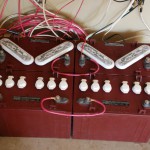A little over two years ago, my wife and I entered a new phase of life in two respects: we got three chickens, and we got a plug-in hybrid vehicle. They have more in common than I would have thought. We see flagging performance in both (egg-laying and battery capacity). We knew the chickens would only last/live for something like 4 years. It’s looking like the EV battery may be similar! Both are happiest pipkining around: plodding about at a leisurely pace. And perhaps like some children, they both disappoint us at times, but we are fond of them all the same. They’re good girls, we tell ourselves.
It may come as no surprise to you that I’ve been collecting data (yes, on both “experiments,” but I’ll spare you egg masses and laying schedules). It takes a little time to do, but recording/resetting the trip meter for every charge, noting charge time and energy delivered, and convincing the wife to go along does pay off, as you will hopefully be convinced.
From the data, I see that the battery capacity is at about 85% of its original condition. While extrapolation is highly risky, it would seem that I can expect zero capacity on the scale of six years, based on its accelerating decline. At this point, we have put about 500 full-cycle-equivalent charges on the battery in about 700 charge events (just shy of one per day, typically about 70% depth). So perhaps it’s not surprising: few batteries can withstand more than 1–2000 charge cycles before giving out.
Want to see some data?
Hits: 2856






